
The Triangle Shirtwaist Fire: Difficult lessons learned on fire codes and safety
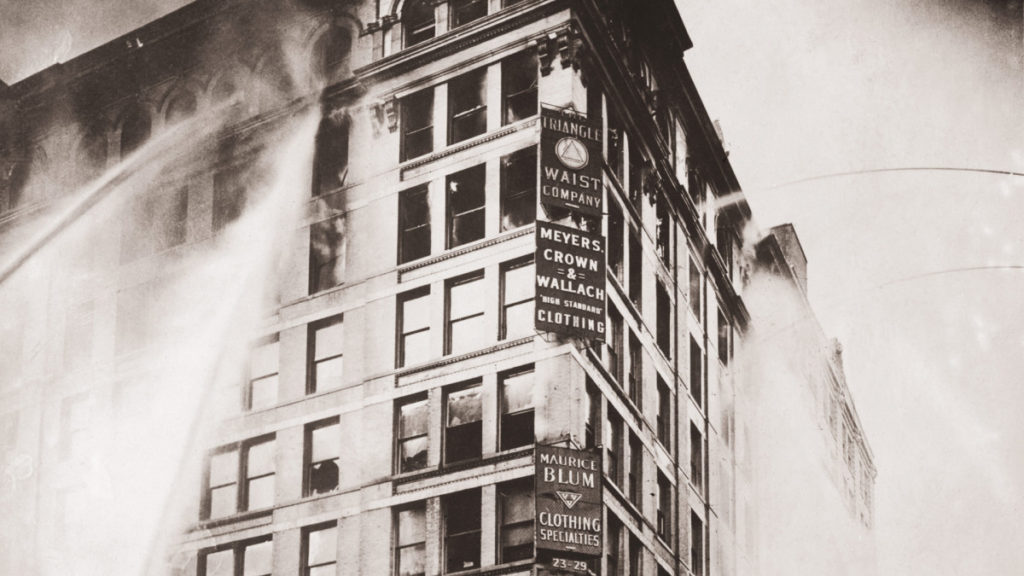 What began as a beautiful spring day in March 1911 ended up being the worst single-day disaster and loss of life in New York City up until Sept. 11, 2001.
What began as a beautiful spring day in March 1911 ended up being the worst single-day disaster and loss of life in New York City up until Sept. 11, 2001.
Like so much flammable cotton fiber left on the cutting room floor, the Triangle Shirtwaist Fire not only caused the deaths of 146 immigrant pieceworkers, but also provided the spark to incite the Labor-Reform Movement and scores of fire and building code improvements.
The fire, which lasted sparsely more than a half-hour, devastated the largest “Shirt Waist” factory in the city and shined a light on some of the most egregious fire and building code violations at that time. It would still be years before reforms finally took root, but the sacrifices made by the workers that died that day may have saved countless others.
Worker conditions and fire code enforcement in the early 1900s
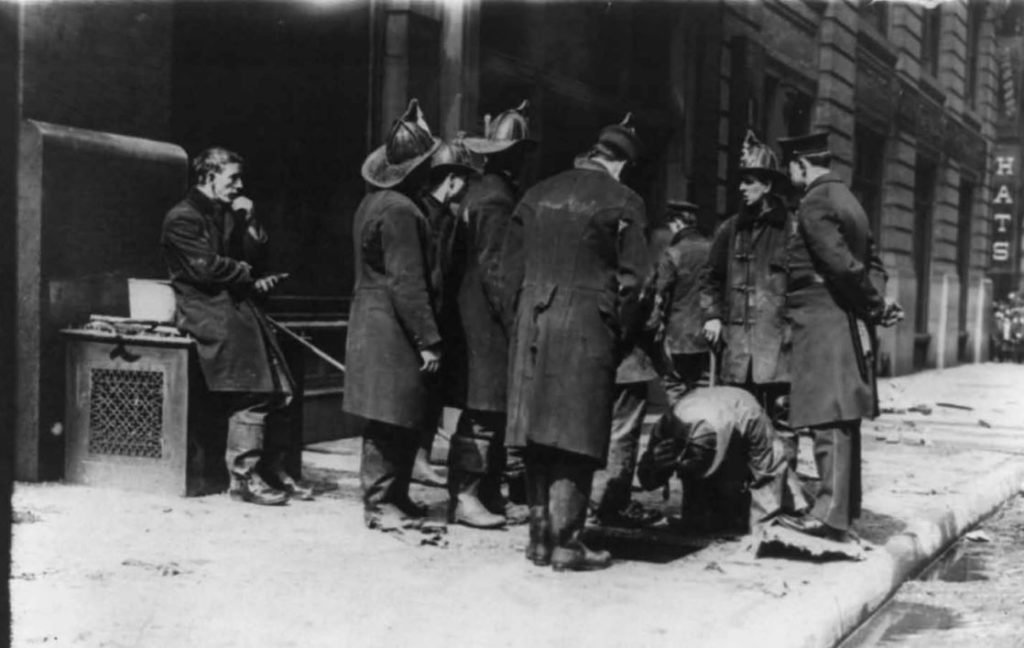
New York City at the turn of the century was home to thousands of unskilled immigrants looking for a place to live, a paid job and a better life. For many, “piece work” in the Lower East Side sweatshops was often the solution.
Conditions at the Triangle Factory, owned by Russian immigrants Max Blanck and Isaac Harris, were often deplorable and dangerous, but no different from most other factories. Dimly lit and overcrowded with few working bathrooms and no ventilation, sweltering heat or freezing cold made the work even more difficult. In addition, lax or no enforcement of the limited fire and building regulations fueled the Triangle fire as much as the bins of flammable material.
The 10-story Asch Building, constructed in 1900 and owned by Joseph J. Asch, had two entrances located midway down the street-side façades. The “formal” entrance was located approximately 90 feet from the corner. Entry was through a vestibule that opened into a lobby containing two small passenger elevators and a 33-inch-wide set of stairs. Asch felt that, since the building had elevators, there was no need to light the stairs as no one would ever use them.
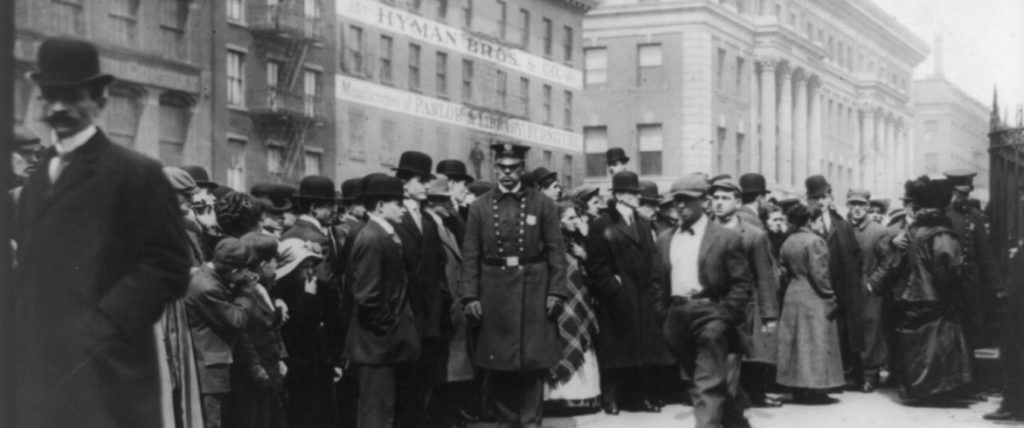
Workers were not allowed to use the “public” entrance; instead, they were relegated to the less formal side entrance. There, along with another unlit stairway, two open freight elevators would take the workers up to the eighth or ninth floor to start their day. The only light into the stairwell was from a dingy overhead skylight at the top of the shaft. The 10th floor was where Blanck and Harris had their private offices. In order to comply with the building code requirements of the day, Asch reluctantly installed a fire escape along the rear of the building opening onto an areaway. The installation of the fire escape would prove to be one of the costliest in terms of lives lost.
Smoking was not permitted in factories at the time, but the laws were not enforced and fires were commonplace. Fire buckets, filled with scarcely more than a gallon of water, were often placed around the floor to put out stray fires. With reinforced floors, the Asch Building was touted as “fireproof,” much like the Titanic was thought to be “unsinkable.” Ironically, the same material that helped make it so strong also caused the fire to burn with more concentrated intensity. The masonry construction, coupled with the incredible fire load, actually helped keep the fire’s heat within the space.
Both the eighth and ninth floors were set up with rows of tables used for fabric cutting, sewing and finish work. Approximately 300 to 360 people were working between the two floors that day. However, no accurate count of the total number of workers present at the time of the fire remains, and the original transcripts of the court depositions have been lost.
A tragedy of errors
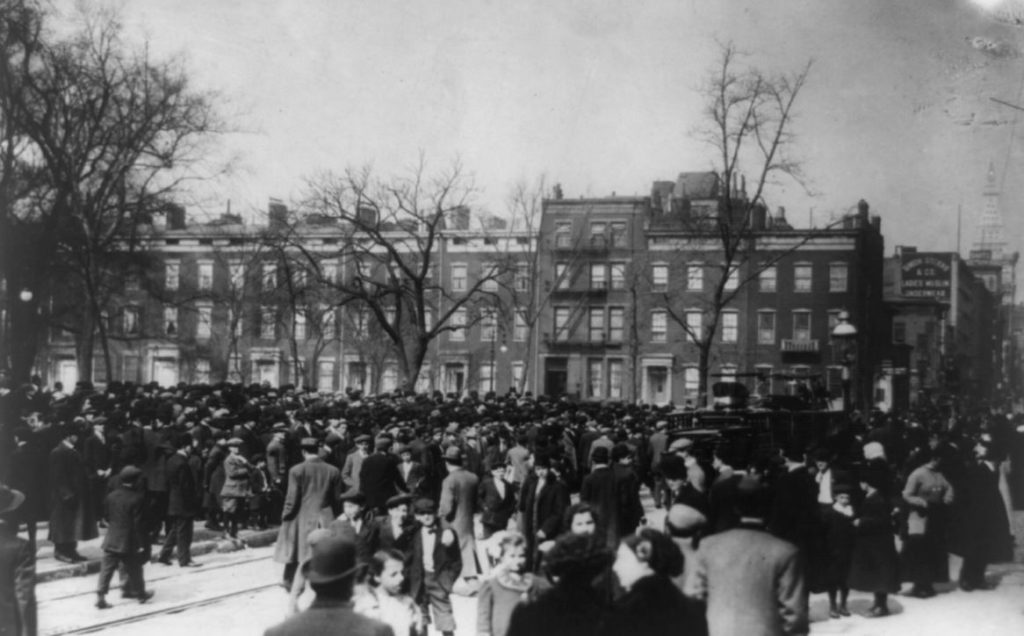
Testimony from one of the survivors indicated there had been a blue glow coming from a bin under a table where 120 layers of fabric had just been stacked prior to cutting. Fire rose from the bin, ignited the tissue paper templates hung from the ceiling and spread across the room. Once ignited, the tissue paper floated off haphazardly from table to table, setting off fires as it went. Several of the men attempted to douse the flames. However, it grew so quickly, their efforts proved futile. Fire hoses located in the stairwells were useless, as there was no pressure to operate them. Investigations later proved that the pipes connecting the fire lines to the water tower had a broken valve and that no amount of pressure from the rooftop water tank would have put out the fire. Ironically, there were no provisions that the hoses actually had to work; only that they had to be installed.
As early as 1905, New York City had provided for city water service to be “valved off,” allowing additional pressure to be diverted to specific areas when fires broke out. Such was the case in the Triangle fire. Once the alarm sounded, workers at the local pumping station shut down other water mains to direct all available pressure to the area around the fire. Although the additional pressure would have made a ground assault easier, an advancing attack up the stairway would have been futile, as the pumper could not overcome the static head caused by the 100-foot change in elevation.
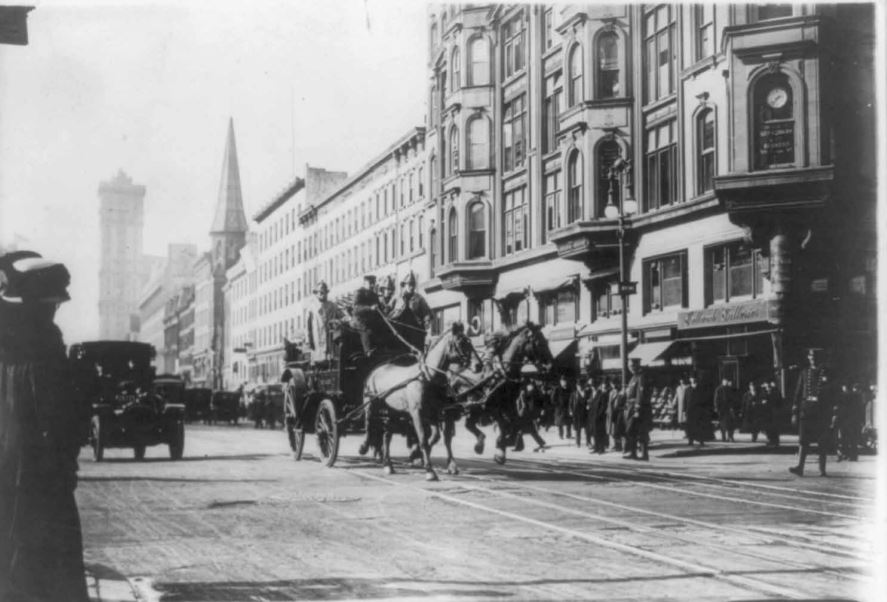
Sadly, there was no direct way to contact the fire department. Telephone service was in its infancy and, although the Triangle factory did have a working phone system, all calls were routed through the 10th-floor switchboard. Frantic calls from the staff on the eighth floor went unanswered as it was the end of the day and the operator was busy tending to other tasks. By the time she did answer the phone, she could only discern one word: “Fire!”
She alerted her bosses, who immediately summoned the elevator. By that time, estimates of 40 to 70 people had massed in the elevator lobby. The elevator car was designed to hold 12. When it arrived, Blanck filled the elevator car with his family and several panicked workers. He then ordered the elevator operator straight to the lobby without stopping. The operator was told to return only to the 10th floor. By the time the elevator made its way back, the fire was fully engaged on the eighth floor and quickly spreading to the ninth. A second load of people was ferried to safety, but that would be the last trip. Panicked workers crashed through the elevator shaft doors and fell to their deaths on top of the cars below, effectively preventing another attempt. The open elevator doors, coupled with the nine-story shaft, acted like a huge blast furnace, providing the necessary oxygen to fuel the fire and helping it to jump to the floors above.
Meanwhile, the owners and the remaining staff on the 10th floor, sensing they could no longer get down the darkened stairs, escaped onto the roof and across to one of the adjacent New York University buildings. The smoke billowing past their windows alerted NYU Law Professor Frank Sommer and his students to the tragedy in the Asch Building. They rushed to their roof, dropped ladders onto the building and rescued those still waiting to escape.
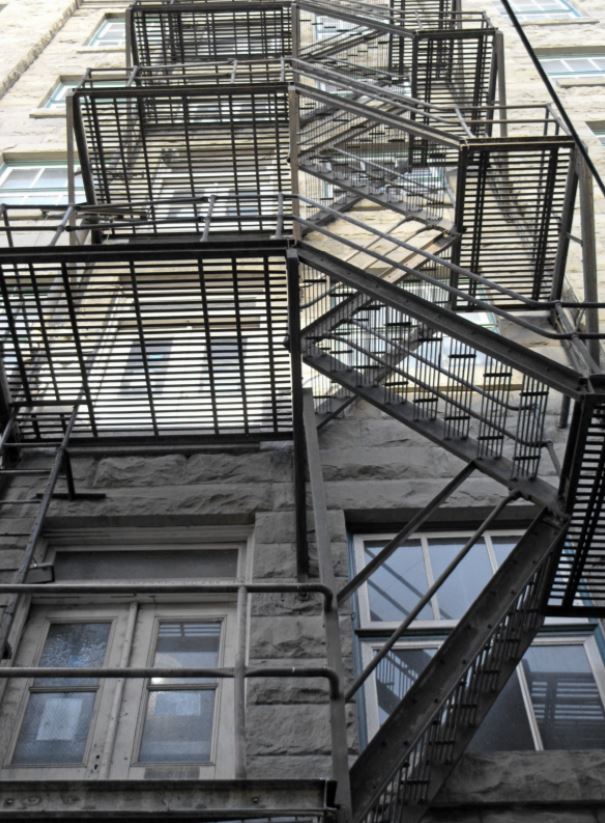
Blanck and Harris were accused of locking the stairway doors to prevent stealing – a charge they flatly denied. Harris countered by saying later that if the doors were locked, it was to prevent the “girls” from coming in late and sneaking in. Due to the narrowness of the stairs and the fact that there were no “landing” requirements in the building codes at the time, the doors to the stairwells opened into the space instead of in the direction of travel. Numerous people were killed because they piled up in front of doors they could not open. Several people were crushed to death, pressed against the doors, without the fire ever reaching them. Upon investigation, the cast-iron stair carriages and slate treads were found to have cracked from the intense heat of the fire, prompting calls for future stairs to be “fire-rated.” In an effort to save money, Asch decided that the main stairs should not go any further than needed, so they did not extend to the roof, blocking another potential exit to safety.
The fire escape, which measured 16- by 18-inches wide, was tacked onto the rear of the building to satisfy the minimum requirement in the building code at the time. The nearly vertical angle of the ladders made descent all but impossible for women in dresses. More frightening was the fact that the fire escape did not go all the way to the ground. As installed, the fire escape terminated on top of the skylight that provided light to the basement, a fact that was found out by many too late. Overloaded, the fire escape collapsed, sending scores to their death. The one thing that could have saved lives actually cost many more.
New York City’s fire department apparatus, touted to be the finest in the country, had not kept pace with the burgeoning construction industry at that time; its manual ladders could only reach to the sixth floor, fully two floors below the level of fire. The use of ground hoses proved ineffective and rescue operations were virtually non-existent. Attempts at stretching fire nets to stop or catch jumpers were thwarted when groups of women opted to jump hand-in-hand, tearing the nets. No one survived the nine-story plunge to a net being held, at best, six feet off the ground. Once the nets became unusable, reports were that people and debris falling or jumping from the building and landing on the hoses or injuring the horses hampered further fire department efforts. Fire equipment had to be pulled back from the scene to prevent further losses.
The aftermath
Investigations into the causes of the Triangle fire went on for years. Numerous recommendations were made in the hopes of bringing about reforms to both garment and construction industry practices. Changes, such as mandatory fire drills, periodic fire inspections, working fire hoses, sprinklers, exit signs and fire alarms, doors that swung in the direction of travel and stairway size restrictions, were just some of the advances that stemmed directly from the Triangle fire.
In all, 49 workers had burned to death or suffocated by smoke, 36 died in the elevator shafts and 58 died by jumping to their deaths on the sidewalks below. Three more died at the hospital, bringing the total dead to 146.
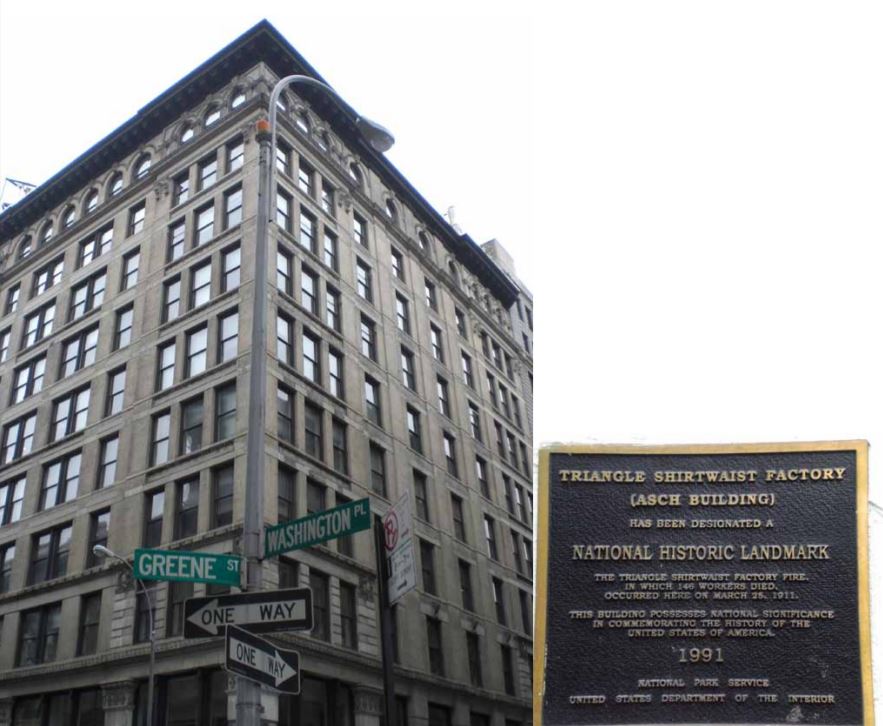
Blanck and Harris were acquitted on all criminal charges from the lawsuits that ensued. Twenty-three families who lost relatives sued Asch for not complying with the fire laws and were paid $75 per suit. Blanck and Harris filed insurance claims approaching their maximum coverage – an amount far exceeding their documented losses – to which the insurance company inexplicably settled for $60,000 above any documented losses. So, Blanck and Harris made a profit of more than $400 per individual killed in the fire.
During a trip to the site on a bleak morning in November, I found the small bronze plaque mounted on the building that belies the significance of what took place on the site. One can only imagine the horror of having to choose certain death by dying in the fire or tempting fate by jumping onto the sidewalk nine stories below. But the memories of those who died linger, and will forever force us to re-evaluate the way we design, construct and protect the buildings in which we live and work.
Selected bibliography
Newspapers: New York Times, various dates. Obtained through archival research through ProQuest Historical Newspapers online service.
Books/reports: Stein, Leon. The Triangle Fire. Philadelphia: Lippincott, 1962.
Von Drehle, David. Triangle, The Fire That Changed America. New York: Grove Press, 2003.
Preliminary Report of the Factory Investigating Commission, (3 volumes). Robert F. Wagner, Chairman. Albany, New York: The Argus Company, 1912.
Second Report of the Factory Investigating Commission, (3 volumes). Albany, New York: J.B. Lyon Company, 1913.
Third Report … (2 volumes). Albany, New York: J.B. Lyon Company, 1914.
Fourth Report … (2 volumes). Albany, New York: J.B. Lyon Company, 1915.
Kheel Center of the School of Industrial and Labor Relations. Cornell University Archives, New York.







